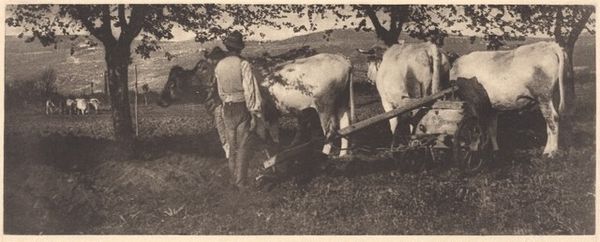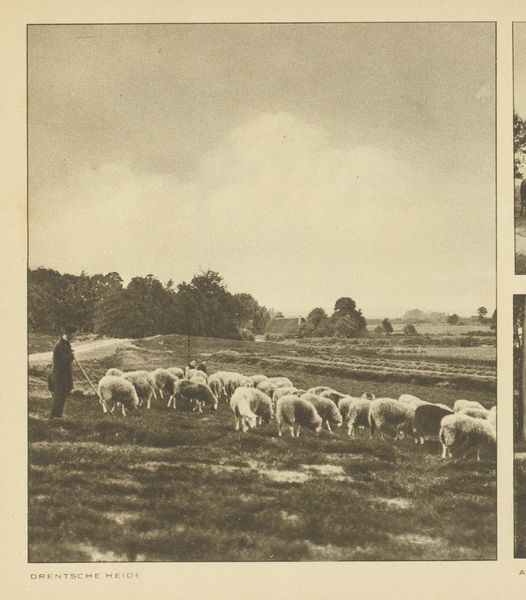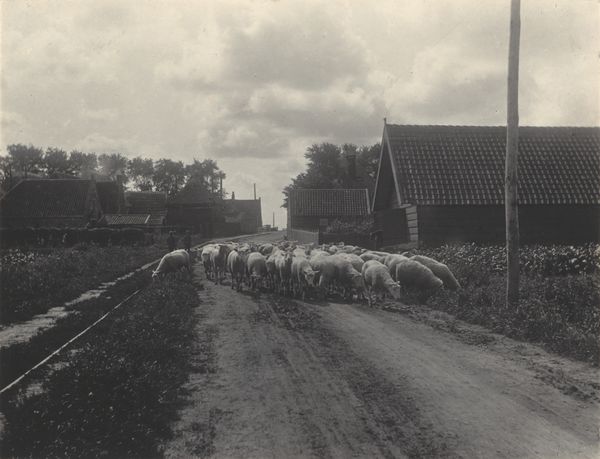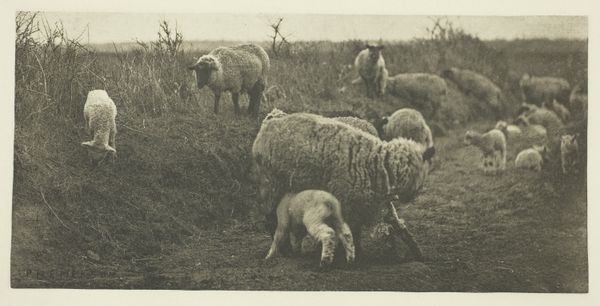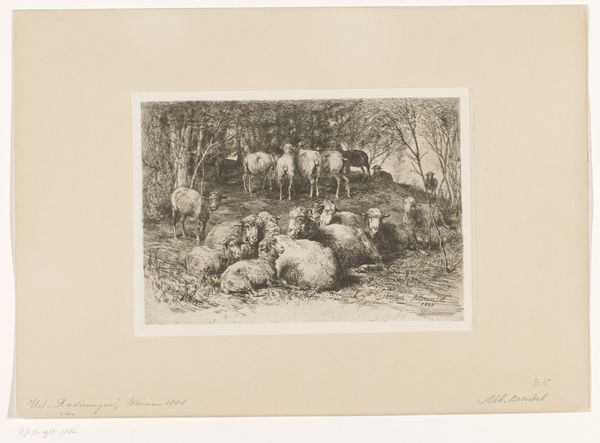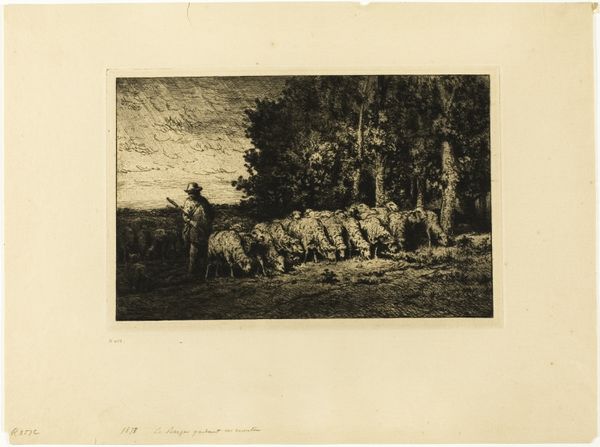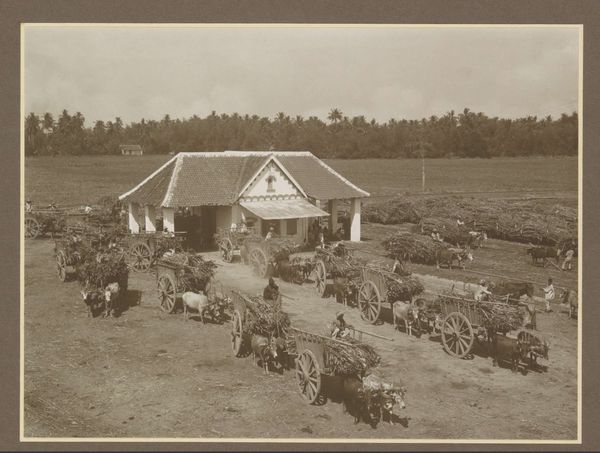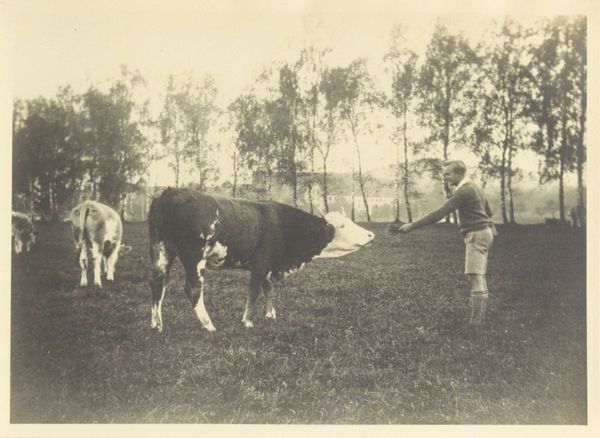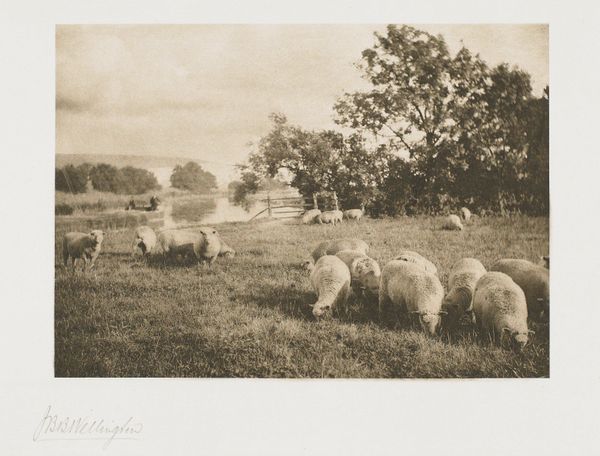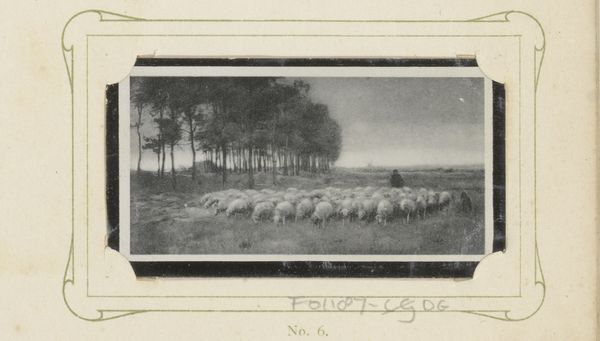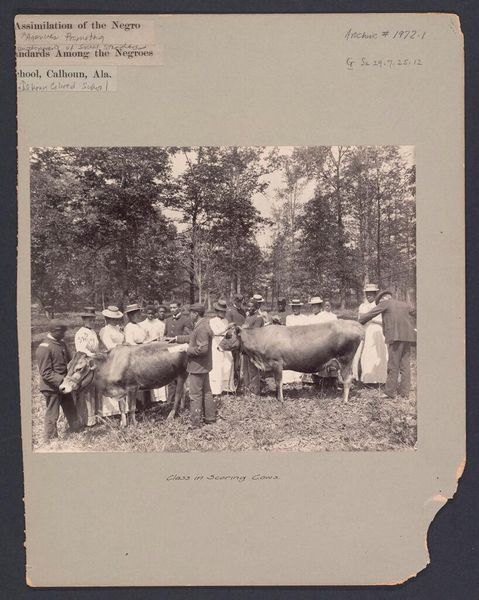
photography, gelatin-silver-print
#
portrait
#
dog
#
landscape
#
photography
#
gelatin-silver-print
#
genre-painting
Dimensions: height 165 mm, width 221 mm
Copyright: Rijks Museum: Open Domain
Curator: What a tranquil image. This is Richard Tepe’s “Herder met hond en schapen,” or “Shepherd with dog and sheep,” a gelatin silver print made sometime between 1900 and 1930, currently held in the Rijksmuseum. Editor: Yes, there is a pastoral charm here. Immediately, I feel the weight of tradition in it, the relationship to labor and the land, a simplicity that contrasts sharply with the complexities of modernity brewing at the time. It feels almost like an imagined past, or at least a romanticized one. Curator: I agree. Tepe often utilized familiar iconography. The shepherd himself seems a timeless figure, almost biblical. He’s placed amidst his flock with the trees towering behind. We are situated as viewers within this familiar narrative. The dog also fulfills a known allegorical role as loyal and vigilant, part of a long lineage of symbolic pairings. Editor: It’s striking how the trees in the background almost dwarf the shepherd, though. Makes me think about man’s limited control over nature, especially during that transition between agrarian societies and early industrialization. Were they trying to reinforce or hold onto a rapidly disappearing way of life, idealizing labor, or maybe trying to subtly highlight its coming obsolescence? Curator: An interesting point. Certainly, the use of a then contemporary medium—photography—to depict a traditional genre scene invites that tension. Tepe seems aware of his position in a changing world, drawn to the simple iconography of the rural, even while using modern methods to frame that simplicity. It acknowledges progress while yearning for the past. The composition emphasizes order and control in the placement of the subjects. It’s more about the relationship than any individual figure or any of the elements as an ensemble. Editor: True. It does become something different, I suppose, as a gelatin silver print rather than, say, an oil painting, like something from Millet, Courbet, or other painters. This makes me wonder: Was this seen as an artistic documentation or as part of an aestheticized fantasy that helped to obscure the harsh realities of rural labor for privileged audiences? Curator: Both, maybe? I think Tepe successfully synthesizes many different layers. It's not merely one message, or the other. There is always something to ponder, even within such a familiar tableau. Editor: I agree. There is value, here, in letting those tensions and oppositions be just what they are: a reflection of complicated dynamics during periods of social change. The artist seems conscious of history—aware that their role, just as the shepherd’s role, will be defined differently from one generation to the next.
Comments
No comments
Be the first to comment and join the conversation on the ultimate creative platform.
